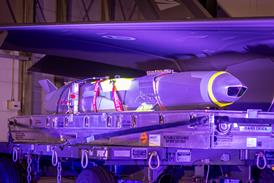Forecasts predict doubling of US passengers by 2025
The US Federal Aviation Administration has unveiled its first estimate of the cost of modernising the country's airspace system - between $30 billion and $44 billion, split between government-funded infrastructure and what users will pay to equip their aircraft.
Steered by a new Operational Evolution Partnership master plan, unveiled by FAA administrator Marion Blakey at an RTCA symposium in Washington DC last week, the US government plans to invest almost $1 billion a year through 2025 in its next-generation air transport system (NGATS).
This first cut at the cost of retooling the US national airspace system comes as the FAA forecasts passenger numbers will double by 2025. Blakey warns that failure to implement the new system, in terms of delays, could cost $20 billion a year by 2025, up from today's estimated annual losses of $9.4 billion. "The choice is clear," she says. "Pay now or pay dearly later."
Industry has not welcomed the FAA's cost estimate. "How much will it cost? The honest answer is: 'We haven't got a clue'," says Clay Jones, president and chief executive of avionics manufacturer Rockwell Collins. "I contend it is not possible to describe the investments necessary for the airspace user to upgrade their aircraft, or for the ground automation provider to identify the applications and services they will be required to provide, until we can bring forward an integrated approach to the necessary change." He says the partnership plan is "a great first step".
"Will it be an investment worth its while? Will [the FAA] get it done on time? It's a hell of a gamble," says Air Transport Association president and chief executive James May. Blakey says the FAA's figures are in line with estimates for implementation of the European air traffic management modernisation programme SESAR, which she says will cost $25-37 billion.
The Air Traffic Alliance consortium leading SESAR plans to complete definition of the concept of operations, architecture and total cost estimates by the end of June. A detailed plan of action is to be completed by March 2008, ready to launch the SESAR modernisation effort for a 2020 completion. Blakey says the FAA's final NGATS concept of operations and enterprise architecture plan are both to be ready by mid-May.
Source: Flight International























